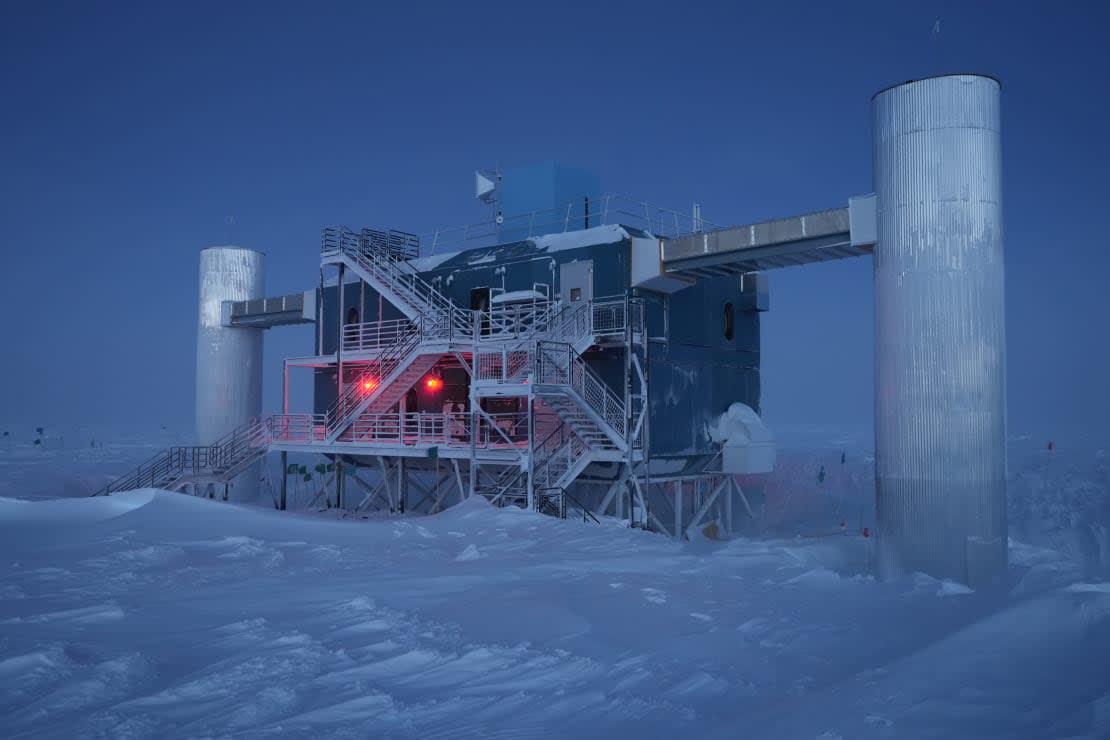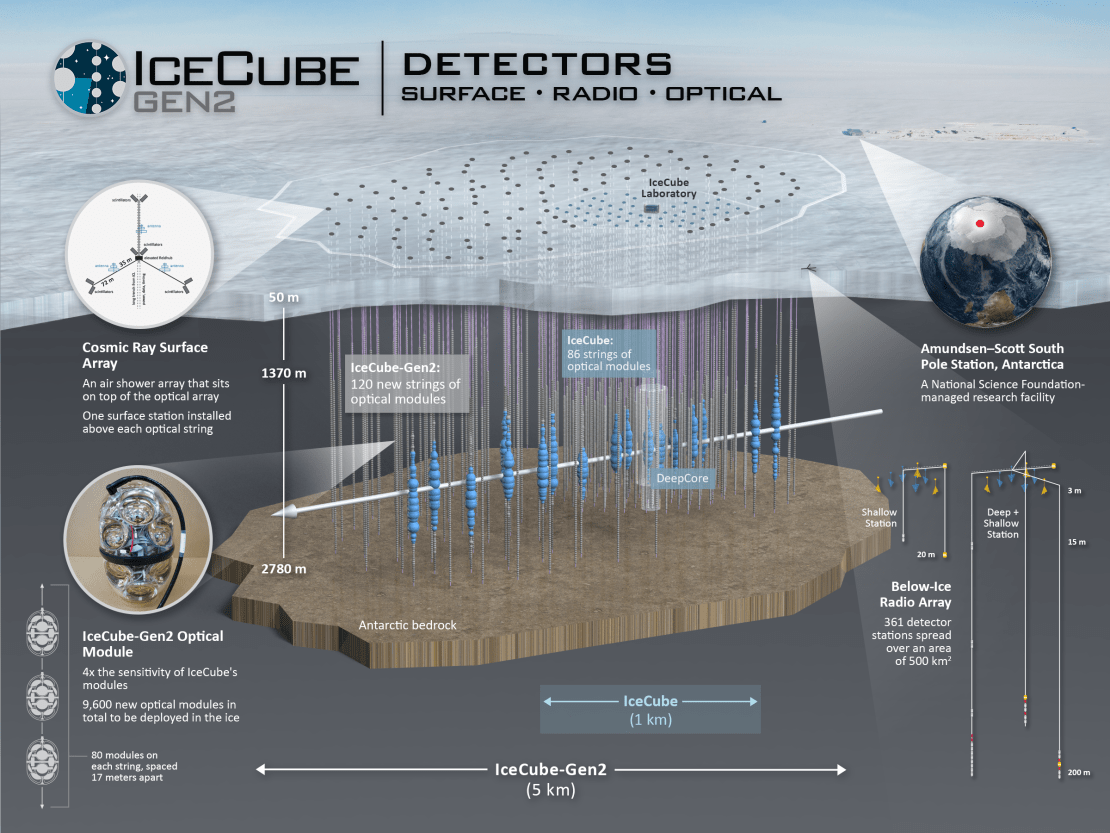
IceCube-Gen2, the planned extension of the IceCube Neutrino Observatory at the South Pole, was among nine projects selected for the Federal Ministry of Research, Technology, and Space’s (BMFTR) short list of the most important and promising research infrastructure projects. Federal Research Minister Dorothee Bär made the announcement earlier this month.
The BMFTR is the German ministry for research, technology, and space that provides funding for research projects and institutions while also promoting education, science, and research.
For its national prioritization process, the BMFTR selected 32 projects for further evaluation from 58 submissions. The projects, covering a broad range of scientific disciplines, underwent a rigorous evaluation process, with the most successful projects making the short list. Selected projects demonstrated high scientific excellence, innovation and transfer potential, and careful planning. Although inclusion on the short list does not guarantee a funding commitment, the shortlist represents research infrastructures of national importance.
“This is an important recognition of the potential of IceCube-Gen2 and our specific efforts in Germany,” says Marek Kowalski, IceCube collaborator, Leading Scientist at Deutsches Elektronen-Synchrotron in Germany, and IceCube-Gen2 Coordination Committee chair. “In getting an international project off the ground, there is a chicken-and-egg problem in obtaining support across the countries. Being prioritized by the German government will be very helpful in this respect.”
IceCube-Gen2, which will be about eight times larger and eight times more sensitive than the current iteration, will be able to detect significantly more cosmic neutrinos while remaining relatively cost-effective.

Moving forward, the BMFTR will begin discussions with the participating research institutions and partners, after which the projects will be further developed based on recommendations made during the evaluations. Projects will then be evaluated by a mandated committee of the German Federal Ministry of Education and Research.
“IceCube has opened a new window to the Universe by discovering a cosmic neutrino flux and identifying the first sources. Thanks to the excellent optical properties of the deep ice, we can scale up IceCube-Gen2 to by almost a factor of ten for comparable cost,” says Albrecht Karle, the principal investigator of the IceCube Upgrade project and coordinator for IceCube-Gen2. “We have developed a detailed, 400-page blueprint of IceCube-Gen2. The decision in Germany is a huge step towards the realization of the new observatory in the next decade.”